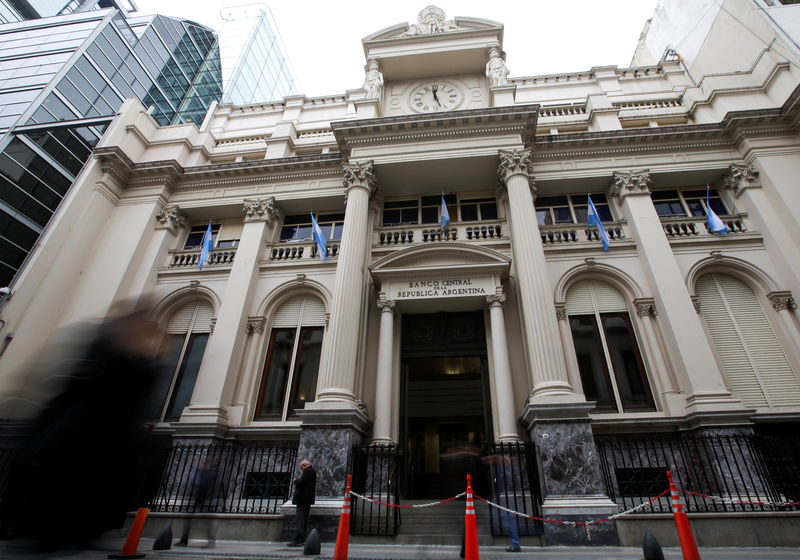By Gabriel Burin and Walter Bianchi
BUENOS AIRES (Reuters) - Argentina's central bank on Wednesday removed the 60 percent floor on its benchmark interest rate, paving the way for it to reduce one of the highest borrowing rates in the world, which has strangled growth in Latin America's third-biggest economy.
A central bank source declined to give a time frame for a potential interest rate cut and stressed that the bank would maintain a cautious monetary policy approach to safeguard against peso volatility.
"A couple of months of volatility have passed, and we want to reinforce that the elimination of the rate floor does not mean that we are going to lower our guard," the source said.
The central bank in August hiked its benchmark policy rate to 60 percent after the peso
The bank on Wednesday also said it is scaling back its potential purchase of dollars to $50 million from $150 million to relieve pressure on the peso currency.
The peso dropped 2.08 percent to 38.20 per U.S. dollar on the bank's announcement, traders said, and closed the day at 37.51.
Economists predicted in a central bank poll on Tuesday that inflation over the next 12 months would be 29 percent, below the previous month's outlook of 32.1 percent.
The International Monetary Fund, which signed a $56.3 billion financing deal with Argentina in September, welcomed the central bank announcement, saying that the government's new monetary policy was yielding results.
Argentina's skyscraping interest rates have slowed economic growth, and economists predict contractions of 2.4 percent in 2018 and 1.2 percent in 2019, the poll of economists showed.
"If the rate does not begin to fall, the economy will not jump-start," said Horacio Larghi, an analyst at Argentine firm Invenomica, adding that breaking the 60 percent barrier would "change investor expectations."
Argentina's tight monetary policy, spearheaded by central bank President Guido Sandleris and implemented after the country secured the IMF bailout, established a floating exchange rate band for the peso and introduced measures to control inflation by limiting growth in the country's monetary base. The policy has largely stabilized the peso.
In addition, the central bank tightened the adjustment rate of its foreign exchange trading band to 2 percent from 3 percent, beginning in 2019.
